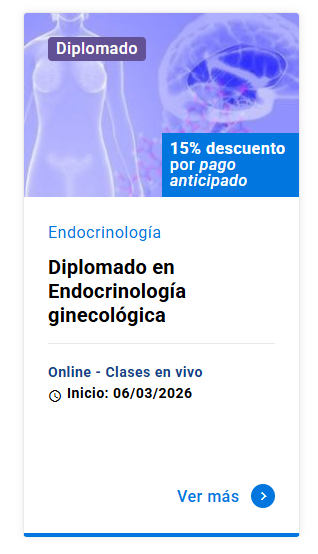Endoscopia preoperatoria en cirugía bariátrica: Es realmente necesaria
DOI:
https://doi.org/10.11565/arsmed.v42i1.59Palabras clave:
endoscopia, biopsia, Endoscopia preoperatoriaResumen
Patologías esofagogástricas son reconocidas antes y después de procedimientos bariátricos, pero frecuentemente y severamente debatidos. Se realizó un estudio con la finalidad de comparar los hallazgos endoscópicos del aparato digestivo superior con los resultados de anatomía patológica en pacientes sometidos a bypass gástrico laparoscópico en Y de Roux  y gastrectomía en manga por obesidad mórbida. Un total de 142 pacientes fueron incluidos en el estudio, todos bajo un régimen de seguimiento. Se hicieron análisis retrospectivos con hallazgos endoscópicos preoperatorios. Los reportes endoscópicos estuvieron disponibles para el total de los pacientes incluidos, asimismo los reportes de biopsias endoscópicas. El promedio de edad fue 34.7 años, 88 (61.9%) pacientes eran mujeres y 54 (38%) hombres. El hallazgo endoscópico patológico predominante fue gastritis erosiva 56.3% (80/142), seguida por gastritis nodular 17.6% (25/142), hernia hiatal tipo I 3.5% (5/142), esofagitis 3.5% (5/142), duodenitis inespecífica 2.8% (4/142), pólipos gástricos 2,8% (4/142), y 18 estudios normales 12.6%. En cuanto a resultados de biopsias reportamos 243 hallazgos y el total no se corresponde con el número de casos en vista que algunos pacientes tenían más de una patología. El hallazgo más frecuente fue gastritis crónica 96.4% (137/142), infección por Helicobacter pylori 40.8% (58/142), hiperplasia foveolar difusa 14.7% (21/142), hiperplasia foveolar focal 15.4% (22/142), pólipos hiperplásicos 2.8% (4/142) y acantosis irregular 0.7% (1/142). Concluyendo de los 142 pacientes estudiados, solo 18 (12.6%) estudios resultaron normales, sin embargo no se corresponden con biopsias indemnes, pero los hallazgos patológicos no tienen relevancia clínica, por lo que ni la endoscopia preoperatoria en el paciente obeso ni el estudio anatomopatológico del estómago y duodeno parecen estar justificados en nuestra población.Descargas
Citas
Adams TD, Avelar E, Cloward T, Crosby RD, Farney RJ, Gress R, Halverson RC, Hopkins PN, Kolotkin RL, Lamonte MJ, Litwin S, Nuttall RT, Pendleton R, Rosamond W, Simper SC, Smith SC, Strong M, Walker JM, Wiebke G, Yanowitz FG & Hunt SC. (2005). Design and rationale of the Utah obesity study. A study to assess morbidity following gastric bypass surgery. Contemp Clin Trials 26, 534–551. doi: 10.1016/j.cct.2005.05.003
Adams TD, Pendleton RC, Strong MB, Kolotkin RL, Walker JM, Litwin SE, Berjaoui WK, LaMonte MJ, Cloward TV, Avelar E, Owan TE, Nuttall RT, Gress RE, Crosby RD, Hopkins PN, Brinton EA, Rosamond WD, Wiebke GA, Yanowitz FG, Farney RJ, Halverson RC, Simper SC, Smith SC & Hunt SC. (2010). Health Outcomes of Gastric Bypass Patients Compared to Nonsurgical, Nonintervened Severely Obese. Obesity (Silver Spring) 18(1), 121–130. doi: 10.1038/oby.2009.178
Adams TD, Davidson LE, Litwin SE, Kolotkin RL, LaMonte MJ, Pendleton RC, Strong MB, Vinik R, Wanner NA, Hopkins PN, Gress RE, Walker JM, Cloward TV, Nuttal RT, Hammooud A, Greenwood JL, Crosby RD, McKinlay R, Simper SC, Smith SC, Hunt SC. (2012). Health Benefits of Gastric Bypass Surgery after 6 Years. JAMA 308(11), 1122–1131. doi: 10.1001/2012.jama.11164
Barroso FL, Oliveira-e-Silva LG, Valente DC, Zuccaro A, Leite MA, Matteotti NA. (2002). Ulcers and erosions after gastroplasty with silicone ring and bypass. Boletim de Cirurgia da Obesidade 3, 30.
Buchwald H, Avidor Y, Braunwald E, Jensen MD, Pories W, Fahrbach K, Shoelles K. (2004). Bariatric surgery: a systematic review and meta- analysis. JAMA 292, 1724–1737. doi: 10.1001/jama.292.14.1724
Buchwald H, Estok R, Fahrbach K, Banel D, Jensen MD, Pories WJ, Bantle JP, Sledge I. (2009). Weight and type 2 diabetes after bariatric surgery: systematic review and meta-analysis. Am J Med 122, 248–56. doi: 10.1016/j.amjmed.2008.09.041
Case CC, Jones PH, Nelson K, O’Brian Smith E, Ballantyne CM (2002). Impact of weight loss on the metabolic syndrome. Diabetes Obes Metab 4, 407-414. doi: 10.1046/j.1463-1326.2002.00236.x
Chaves LC, Alencar FA, Kahwage-Neto S, Homma M, Almeida, AC. (2001) O papel da endoscopia em um serviço de cirurgia bariátrica. Boletim de Cirurgia da Obesidade 2, 22.
Del Genio F, Del Genio G, De Sio I, Marra M, Alfonsi L, Finelli C, Contaldo F, Pasanisi F. (2009). Noninvasive evaluation of abdominal fat and liver changes following progressive weight loss in severely obese patients treated with laparoscopic gastric bypass. Obes Surg 19, 1664–1671. doi: 10.1007/s11695-009-9891-x
Dixon JB, Bhathal PS, O’Brien PE. (2006). Weight loss and non-alcoholic fatty liver disease: falls in gamma-glutamyl transferase concentrations are associated with histologic improvement. Obes Surg 16, 1278–1286. doi: 10.1381/096089206778663805
Dixon JB, O'Brien PE, Playfair J, Chapman L, Schachter LM, Skinner S, Proietto J, Bailey M, Anderson M. (2008). Adjustable gastric banding and conventional therapy for type 2 diabetes: a randomized controlled trial. JAMA 299, 316–323. doi: 10.1001/jama.299.3.316.
Gomez CA, Lopez G, Messiah SE, Arheart KL, Carrillo A, Muñoz N. (2013). Cardiometabolic health among gastric bypass surgery patients with polycystic ovarian syndrome. World J Diabetes 4, 64-69. doi: 10.4239/wjd.v4.i3.64
Johansson HE, Haenni A, Ohrvall M, Sundbom M, Zethelius B. (2009). Alterations in proinsulin and insulin dynamics, HDL Cholesterol and ALT after gastric bypass surgery. A 42-months follow-up study. Obes Surg 19, 601–607. doi: 10.1007/s11695-009-9806-x
Malfertheiner P, Megraud F, O´Morain C, Bazzoli F, El-Omar E, Graham D, Hunt R, Rokas T, Vakil N, Kuipers EJ. (2007). Current concepts in the management of Helicobacter pylori infection: The Maastricht III Consensus Report. Gut 56, 772-781.
doi: 10.1136/gut.2006.101634
Marano BJ Jr. (2005). Endoscopy after Roux-en-Y gastric bypass: a community hospital experience. Obes Surg 15, 342-345. DOI: 10.1381/0960892053576767
Mathurin P, Gonzalez F, Kerdraon O, Leteurtre E, Arnalsteen L, Hollebecque A, Louvet A, Dharancy S, Cocq P, Jany T, Boitard J, Deltenre P, Romon M, Pattou F. (2006). The evolution of severe steatosis after bariatric surgery is related to insulin resistance. Gastroenterology 130, 1617–1624. DOI: 10.1053/j.gastro.2006.02.024
Mathurin P, Hollebecque A, Arnalsteen L, Buob D, Leteurtre E, Caiazzo R, Pigeyre M, Verkindt H, Drarancy S, Louvet A, Romon M, Pattou F. (2009). Prospective study of the long-term effects of bariatric surgery on liver injury in patients without advanced disease. Gastroenterology 137, 532–540. doi: 10.1053/j.gastro.2009.04.052
McAllister E, Dhurandhar N, Keith S, J. Aronne L, Barger J, Baskin M, Benca RM, Biggio J, Boggiano MM, Eisenmann JC, Elobeid M, Fontaine KR, Gluckman P, Hanlon EC, Katzmrzyk P, Pietrobelli A, Redden DT, Ruden DM, Wang C, Waterland RA, Wright SM, Allison DB. (2009). Ten Putative Contributors to the Obesity Epidemic. Crit Rev Food Sci Nutr 49, 868–913. doi: 10.1080/10408390903372599
Mechanick JI, Youdim A, Jones DB, Garvey WT, Hurley DL, Mcmahon M, Heinberg LJ, Kushner R, Admas TD, Shikora S, Dixon JB, Brethauer S. (2013). Clinical practice guidelines for the perioperative nutritional, metabolic, and nonsurgical support of the bariatric surgery patient—2013 update: cosponsored by american association of clinical endocrinologists, the obesity society, and american society for metabolic & bariatric surgery. Endocr Pract 19, 337–372. doi: 10.4158/EP12437.GL
Mingrone G, Greco AV, Giancaterini A, Scarfone M, Castagneto M, Pugeat M (2002). Sex hormone-binding globulin levels and cardiovascular risk factors in morbidly obese subjects before and after weight reduction induced by diet or malabsorptive surgery. Atherosclerosis 161, 455–462. doi.org/10.1016/S0021-9150(01)00667-0
Mingrone G, Panunzi S, De Gaetano A, Guidone C, Iaconelli A, Leccesi L, Nanni G, Pomp A, Castagneto M, Ghirlanda G, Rubino F. (2012). Bariatric surgery versus conventional medical therapy for type 2 diabetes. N Engl J Med 366, 1577-1585.
doi: 10.1056/NEJMoa1200111
Moreno M. (2012). Definición y clasificación de la obesidad. Rev Med Clin Condes 23, 124-128. doi.org/10.1016/S0716-8640(12)70288-2
Neff KJ, Olbers T, Le Roux CW. (2013). Bariatric surgery: the challenges with candidate selection, individualizing treatment and clinical outcomes. BMC Med 11,8.
O’Brien PE, Dixon JB, Laurie C, Skinner S, Proietto J, McNeil J, Strauss B, Marks S, Schachter L, Chapman L, Anderson M. (2006). Treatment of mild to moderate obesity with laparoscopic adjustable gastric banding or an intensive medical program: a randomized trial. Ann Intern Med 144, 625–633. 10.7326/0003-4819-144-9-200605020-00005
Pontiroli AE, Pizzocri P, Librenti MC, Vedani P, Marchi M, Cucchi E, Orena C, Paganelli M, Giacomelli M, Ferla G, Folli F. (2002). Laparoscopic adjustable gastric banding for the treatment of morbid (grade 3) obesity and its metabolic complications: a three-year study. J Clin Endocrinol Metab 87, 3555–3561. doi: 10.1210/jcem.87.8.8708
Pories WJ, MacDonald KG Jr. Morgan EJ, Sinha MK, Dohm GL, Swanson MS, Barakat HA, Khazanie PG, Leggett-Frazier N, Long SD. (1992). Surgical treatment of obesity and its effect on diabetes: 10-y follow-up. Am J Clin Nutr 55, 582S–585S.
Pories WJ, Swanson MS, MacDonald KG, Long SB, Morris PG, Brown BM, Barakat HA, deRamon RA, Israel G, Dolezal JM. (1995). Who would have thought it? An operation proves to be the most effective therapy for adult-onset diabetes mellitus. Ann Surg 222, 339–350.
Pories WJ, Dohm LG, Mansfield CJ. (2010). Beyond the BMI: the search for better guidelines for bariatric surgery. Obesity (Silver Spring) 18, 865–71.
Puzziferri N, Roshek T, Mayo H, Gallagher R, Belle S, Livingston EH. (2014). Long-term Follow-up After Bariatric Surgery: A Systematic Review. JAMA 312(9), 934–942. doi:10.1001/jama.2014.10706
Renshaw AA, Rabaza JR, Gonzalez AM, Verdeja JC. (2001).
Helicobacter pylori infection in patients undergoing gastric bypass surgery for morbid obesity. Obes Surg 11(3), 281-283. DOI: 10.1381/096089201321336601
Rubino F, Shauer PR, Kaplan LM, Cummings DE. (2010). Metabolic surgery to treat type 2 diabetes: clinical outcomes and mechanisms of action. Annu Rev Med 61, 393-411.
doi: 10.1146/annurev.med.051308.105148
Saab J & Salvatore S. (2015). Evaluating the Cause of Death in Obese Individuals: A Ten-Year Medical Autopsy Study. J Obes 695374, 7pages. doi.org/10.1155/2015/695374
Saliba J, Wattacheril J, Abumrad NN. (2009). Endocrine and metabolic response to gastric bypass. Curr Opin Clin Nutr Metab Care 12, 515–521.
doi:10.1097/ MCO.0b013e32832e1b14
Schauer PR, Kashyap SR, Wolski K, Brethauer SA, Kirwan JP, Pothier CE, Thomas S, Abood B, Nissen SE, Bhatt DL. (2012). Bariatric surgery versus intensive medical therapy in obese patients with diabetes. N Engl J Med 366, 1567-1576.
doi: 10.1056/NEJMoa1200225
Silvestre V, Ruano M, Dominguez Y, Castro R, Garcia-Lescun MC, Rodriguez A, Marco A, Garcia-Blanch G. (2004). Morbid obesity and gastric bypass surgery: biochemical profile. Obes Surg 14, 1227–1232. doi:10.1381/0960892042387048
Sjöström L, Narbro K, Sjöström CD, Kristjan K, Larsson B, Wedel H, Lystig T, Sullivan M, Bouchard C, Carlsson B, Bengtsson C, Dahlgren S, Karlsson J, Lindroos AK, Lönroth H, Näslund I, Olbers T, Stenlöf K, Torgerson J, Ågren G, Carlsson LM. (2007). Effects of bariatric surgery on mortality in Swedish obese subjects. N Engl J Med 357, 741–752.
doi: 10.1056/NEJMoa066254
Stratopoulos C, Papakonstantinou A, Terzis I, Spiliadi C, Dimitriades G, Komesidou V, Kitsanta P, Argyrakos T, Hadjiyannakis E. (2005). Changes in liver histology accompanying massive weight loss after gastroplasty for morbid obesity. Obes Surg 15, 1154–1160. doi:10.1381/0960892055002239
Treepongkaruna S, Nopchinda S, Taweewongsounton A, Atisook K, Pienvichit P, Vithayasai N, Sjmakachorn N, Aanpreung P. (2006). A rapid serologic test and immunoblotting for the detection of Helicobacter pylori infection in children. J Trop Pediatr 52, 267-271. DOI: https://doi.org/10.1093/tropej/fmk003
Wolf AM & Beisiegel U. (2007). The effect of loss of excess weight on the metabolic risk factors after bariatric surgery in morbidly and super-obese patients. Obes Surg 17, 910–919. doi:10.1007/s11695-007-9169-0
Descargas
Publicado
Cómo citar
Licencia
Derechos de autor 2017 ARS MEDICA Revista de Ciencias Médicas

Esta obra está bajo una licencia internacional Creative Commons Atribución-CompartirIgual 4.0.
Los autores/as conservan sus derechos de autor y garantizan a la revista el derecho de primera publicación de su obra, la que estará simultáneamente sujeta a la Licencia CC BY-SA 4.0 (Ver declaración de Acceso Abierto).







